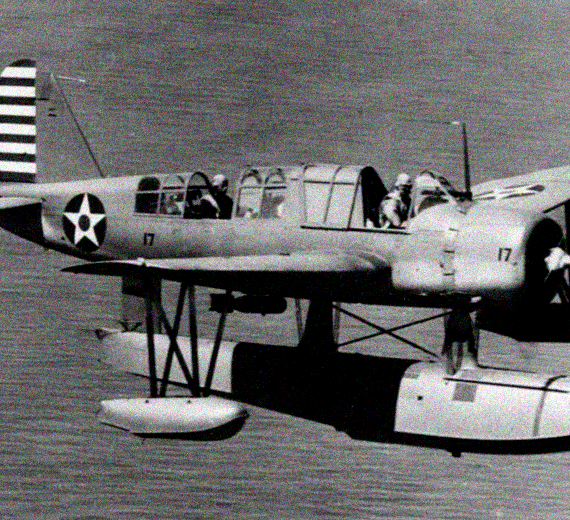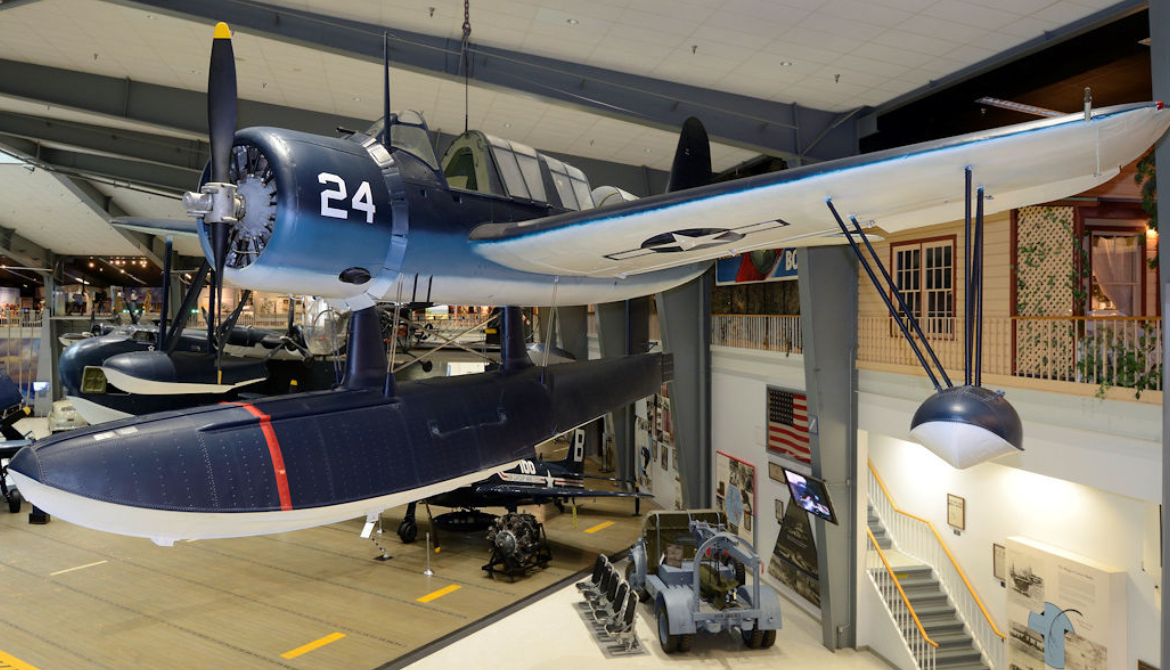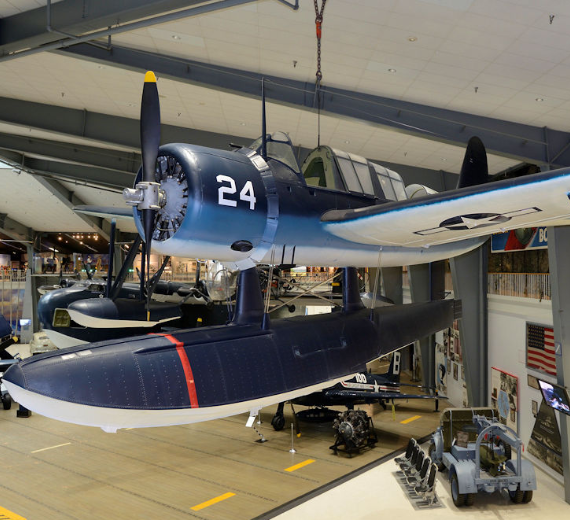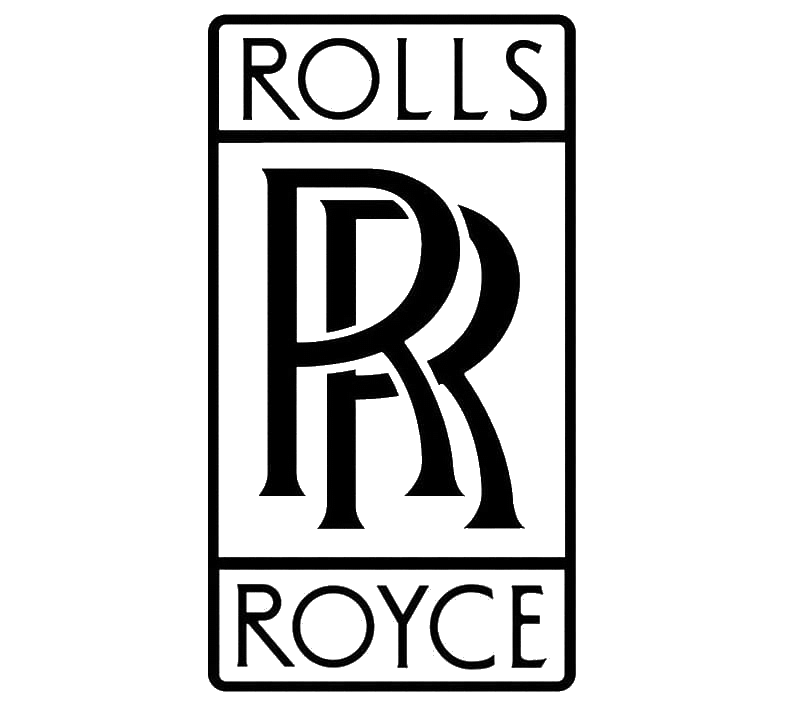.
History Ling-Temco-Vought
OS2U Kingfisher

The Vought OS2U Kingfisher is an American catapult-launched observation floatplane. It was a compact mid-wing monoplane, with a large central float and small stabilizing floats. Performance was modest because of its low-powered engine. The OS2U could also operate on fixed, wheeled, taildragger landing gear.
The Aermacchi MB-339 is a military jet trainer and light attack aircraft, featuring a conventional configuration, tricycle undercarriage and all-metal construction. It has many similarities with the design of the MB-326, sharing the majority of its airframe with the older aircraft. According to aviation periodical Air International, the most significant revision of the MB-339 was a redesigned forward fuselage, which raised the instructor's seat to allow visibility over and past the student pilot's head. In typical operations, the aircraft is flown by a crew of two, who are seated in a tandem configuration; during training missions, the student is seated in the forward position while the observing instructor is placed directly behind and somewhat above them. The cockpit is pressurised and is covered by a jettisonable canopy which works in conjunction with the twin Martin-Baker-built ejection seats.
In the late 1930s, Vought engineer Rex Beisel was tasked with designing an observation monoplane aircraft for the U.S. Navy suitable for many tasks, including directing battleship fire. In replacing the standard biplane observation aircraft with a more modern monoplane design, Beisel incorporated innovations making it the first production type to be assembled with spot welding, a process Vought and the Naval Aircraft Factory jointly developed to create a smooth fuselage that resisted buckling and generated less drag. Beisel also introduced high-lift devices and spoilers. In a unique arrangement, deflector plate flaps and drooping ailerons were located on the trailing edge of the wing to increase the camber of the wing and thus create additional lift. Beisel's first prototype flew in 1938, powered by an air-cooled, 450 hp Pratt & Whitney R-985-4 Wasp Junior radial engine.
For combat missions, the pilot had a .30-caliber Browning M1919 machine gun, the receiver mounted low in the right front cockpit, firing between the engine cylinder heads, while the radio operator/gunner manned another .30-caliber machine gun (or a pair) on a flexible Scarff ring mount. The aircraft could also carry two 100 lb bombs or two 325 lb depth charges. Additionally, the "Kingfisher", as it was designated, served as a trainer in both its floatplane and landplane configurations.0
KmCeiling
0
KmCombat RANGE
0
Km/hAircraft Speed
0
Max Crew
Photo Gallery
Ling-Temco-Vought
OS2U Kingfisher


Ling-Temco-Vought
OS2U Kingfisher
General Info
-
-
- Crew: 2
- Length: 33 ft 7.2 in (10.241 m)
- Wingspan: 35 ft 10.7 in (10.940 m)
- Height: 14 ft 8 in (4.47 m)
- Wing area: 261.9 sq ft (24.33 m2)
-
Powerplant
-
- Empty weight: 3,335 lb (1,513 kg)
- Gross weight: 4,980 lb (2,259 kg)
- Max takeoff weight: (2,722 kg)
- Fuel capacity: 144 US gal (120 imp gal; 545 L) in an integral wing tank
- Powerplant: 1 × Pratt & Whitney R-985-AN2 Wasp Junior 9-cylinder air-cooled radial piston engine, 450 hp (340 kW) for take-off
-
-
-
- 400 hp (298 kW) at 5,000 ft (1,524 m)
-
-
- Propellers: 2-bladed Hamilton Standard constant-speed propeller
-
Performance
- Maximum speed: 171 mph (275 km/h, 149 kn) at 5,000 ft (1,524 m)
- Cruise speed: 152 mph (245 km/h, 132 kn) with 75% power at (1,829 m)
- Landing speed: 89 km/h)
- Range: 908 mi (1,461 km, 789 nmi) with 75% power at 6,000 ft (1,829 m)
- Service ceiling: 18,200 ft (5,500 m)
- Rate of climb: 960 ft/min (4.9 m/s) at 4,000 ft (1,219 m)
- g limits: +8.0, -4.0
Armament
- Guns: 1 fixed, forward firing .30 in (7.62 mm) M1919 Browning machine gun with 500 rounds and 1 .30 in (7.62 mm) M1919 Browning machine gun with 600 rounds, flexibly mounted for the observer.
- Bombs: 650 lb (295 kg) of bombs or depth charges
.
Links to Youtube & Others
The Kingfisher was widely used as a shipboard, catapult-launched scout plane on U.S. Navy battleships, heavy cruisers, and light cruisers during World War II and played a major role in support of shore bombardments and air-sea rescue.
Ling-Temco-Vought
OS2U Kingfisher
The Naval Aircraft Factory OS2N was the designation of the OS2U-3 aircraft built by the Naval Aircraft Factory in Philadelphia, Pennsylvania.
Youtube Link
Throughout its U.S. Navy service, the OS2U and even its predecessor, the Curtiss SOC Seagull, served much longer than planned, as the planned successor, the Curtiss SO3C Seamew,














